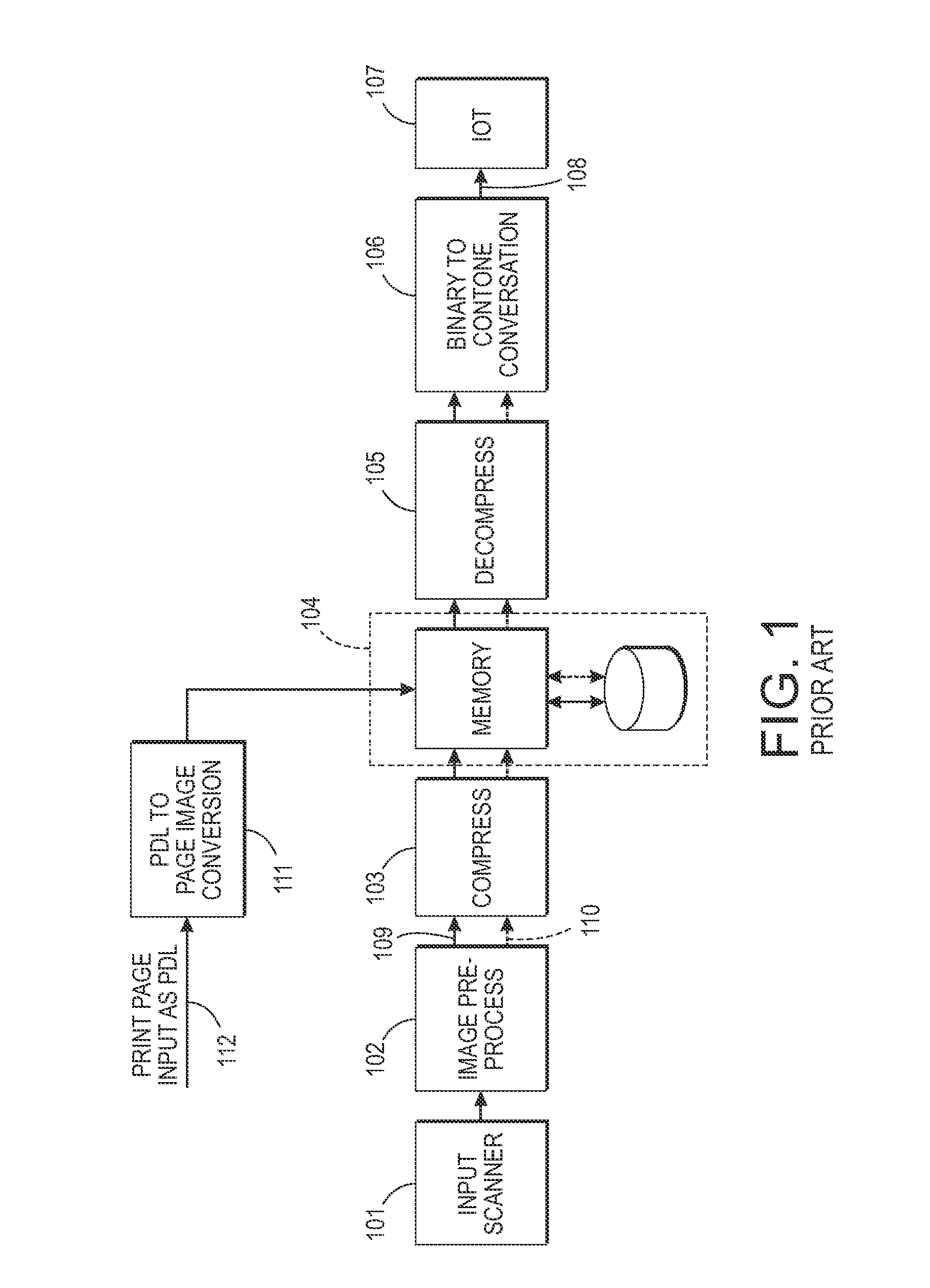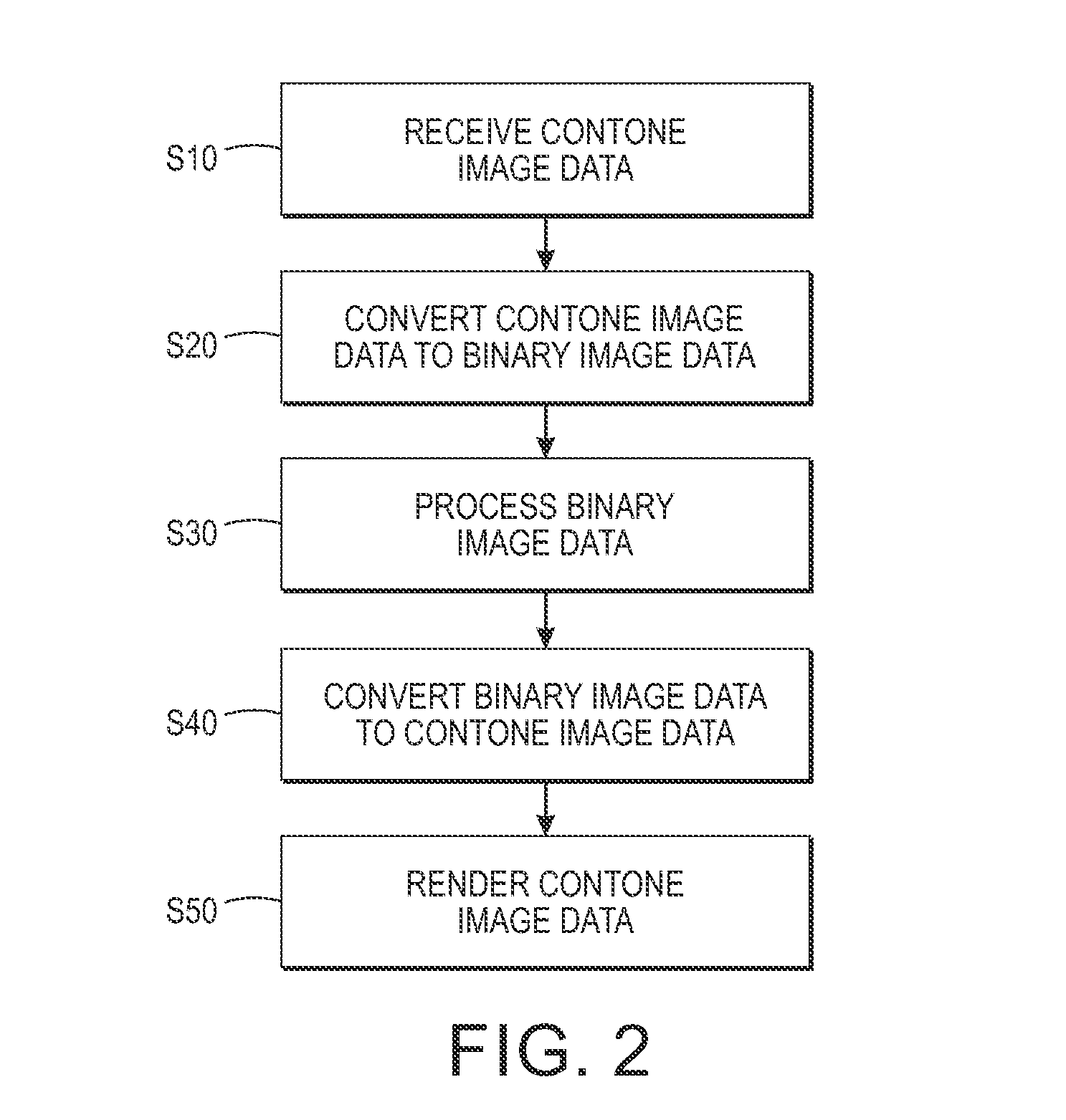Method and system for inverse halftoning utilizing inverse projection of predicted errors
a technology of inverse halftoning and predicted errors, applied in image enhancement, instruments, computing, etc., can solve the problems of error diffusion, low image quality, and low image quality, and achieve the effect of minimal loss of critical information
- Summary
- Abstract
- Description
- Claims
- Application Information
AI Technical Summary
Benefits of technology
Problems solved by technology
Method used
Image
Examples
Embodiment Construction
[0031]For a general understanding, reference is made to the drawings. In the drawings, like references have been used throughout to designate identical or equivalent elements. It is also noted that the drawings may not have been drawn to scale and that certain regions may have been purposely drawn disproportionately so that the features and concepts could be properly illustrated.
[0032]FIG. 1 shows, in schematic form the general, image path of a conventional multifunction reprographic system. The image path is a combination of hardware and software elements that generate, process, and store the digital page images. A control system (not shown) configures each element of the image path depending on the user job. The control system also schedules the various jobs and functions of the entire system.
[0033]As illustrated in FIG. 1, digital scanner 101 accepts a hardcopy version of the page or pages to be copied and converts each page to a digital image, in gray scale form, at some moderat...
PUM
 Login to View More
Login to View More Abstract
Description
Claims
Application Information
 Login to View More
Login to View More - R&D
- Intellectual Property
- Life Sciences
- Materials
- Tech Scout
- Unparalleled Data Quality
- Higher Quality Content
- 60% Fewer Hallucinations
Browse by: Latest US Patents, China's latest patents, Technical Efficacy Thesaurus, Application Domain, Technology Topic, Popular Technical Reports.
© 2025 PatSnap. All rights reserved.Legal|Privacy policy|Modern Slavery Act Transparency Statement|Sitemap|About US| Contact US: help@patsnap.com



